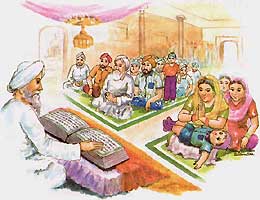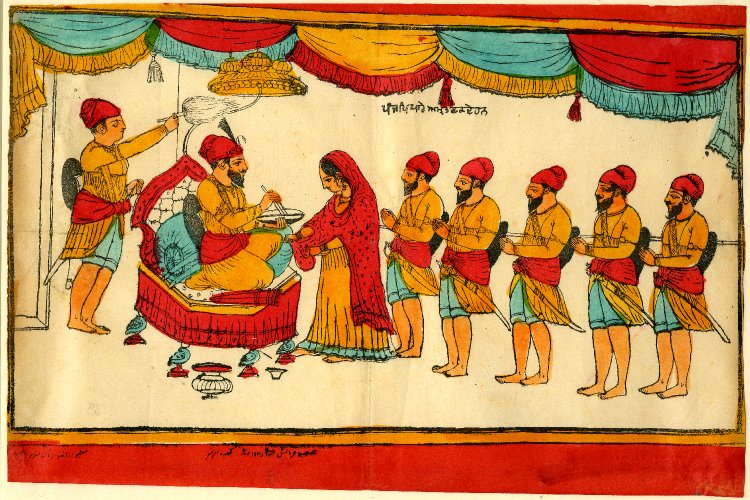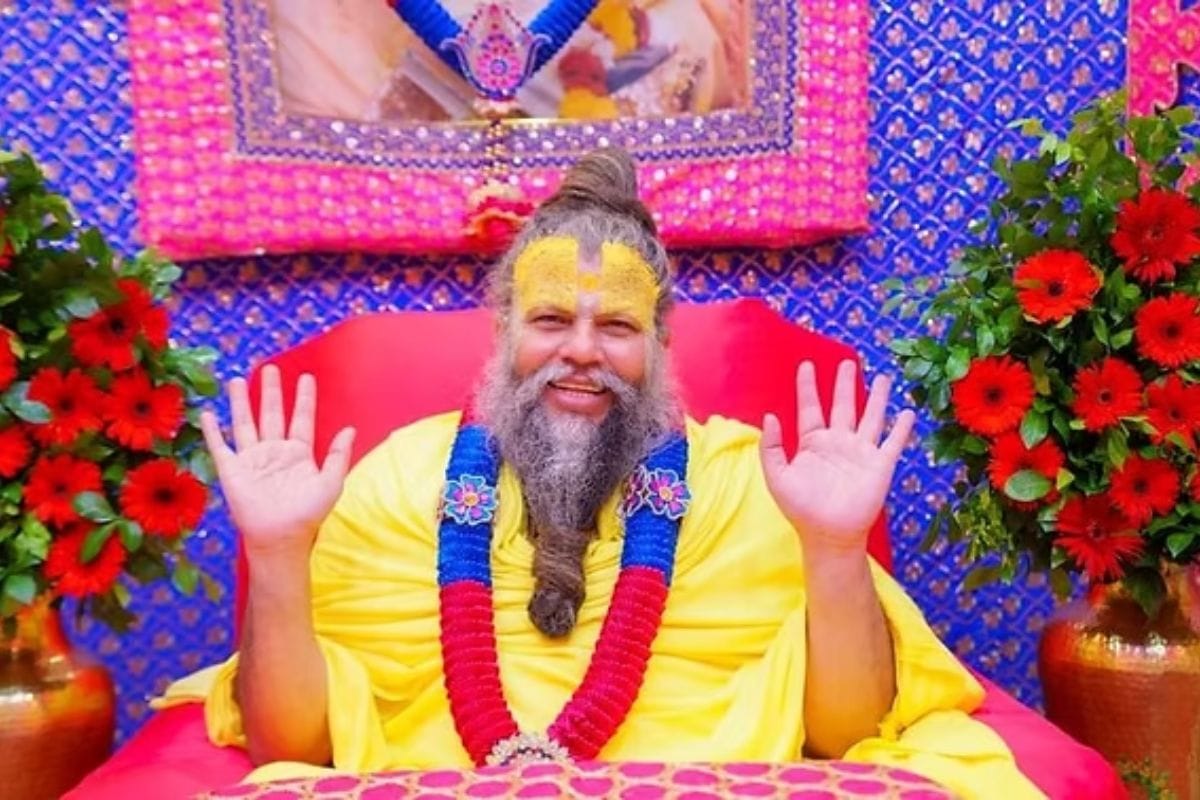Sikhism as a philosophy roots itself in its egalitarian values. From its inception, the first Guru of the Sikhs, Guru Nanak positioned it as an anti-caste and egalitarian ideology. In 1699, the tenth Guru of the Sikhs, Guru Gobind Singh established the Khalsa Panth to further implement Guru Nanak’s teachings.
It was there that Guru Gobind Singh set a code of conduct among Sikhs essentially dismissing caste and gender. That happened through the establishment of the 5 K’s (Kesh/uncut hair, Kara/iron bracelet, Kanga/wooden comb, Kaccha/cotton underwear and Kirpan/steel sword) and giving his followers the title of Singh and Kaur. The thinking behind the new set of last names was to eradicate the biggest caste marker of all, the last name. Women were to take the last name Kaur, which most people say translates to “Princess” and men were to take the last name Singh which translates to “Lion”. The literal meaning of Kaur actually translates to “Prince” coming from the word Kanwar which also means prince, but because of the word’s association with women people began to translate it into “Princess”.
The thinking behind the ‘Singh’ and ‘Kaur’ was to eradicate the biggest caste marker of all, the last name.
There is no doubt that these titles were revolutionary, yet the one thing that is hard to ignore is the strict gender binary it exists in. That being said, a large portion of Sikh first names in the twentieth century have been largely gender neutral. Is gender justice only achieved by gender neutrality? And how do non-binary and gender non-conforming Sikhs fit into the limiting nature of Singh and Kaur?
Rejecting Singh and Kaur for Caste Names
It’s important to note that many Sikhs don’t use Kaur or Singh as a last name, they’ll add it on to the middle (as I do) or leave it off completely. For some people, this is to continue their family history, and for most, it’s simply a continuation of caste.
Casteism is a rampant practice within Sikhs now, with most decision making positions given to upper caste Sikhs, leaving Mazhabi, Ravidassa, and Ramdasia Sikhs with little to no institutional power. Additionally, Sikhs enact caste in the exact same ways as Hindus, even though this is the exact opposite of what our Gurus wanted, with people only marrying, socializing, and interacting within their own caste. It is important to note that some Ravidassa Sikhs have split from Sikhism entirely, and instead claim to be from the Ravidassa religion, because of the casteism they have faced by upper-caste Sikhs.
Casteism is tied to naming even in a tradition that aims to eradicate that. Because of this, it’s important to differentiate Punjabi culture from Sikhism, as not all Sikhs are Punjabi and what Punjabi culture dictates, such as sexism and casteism, isn’t what Sikhism upholds.
Kaur as Space for Empowerment
Many people suggest that the difference between Singh and Kaur are actually not restrictive. Scholar M.S. Ahluwalia says “This difference does not imply inequality. Women and men are different but equal. Sikh Gurus considered both women and men to be unique.” While that argument can be made, Singh and Kaur still enforce a gender binary.
Kaur gives me freedom from patriarchal lineage.
As a femme-presenting cis woman, it’s been very empowering for me to have a gender-neutral name. Yet, Kaur is also something I’ve always felt comfortable with. It’s empowering to have a name that implies power and decision making. I’ve never felt that Sikhism wasn’t empowering to me.
Additionally, Kaur gives me freedom from patriarchal lineage and erases the tradition of changing names after marriage. The emphasis is put off of the family, and in turn placed on the individual, making it so that women have an identity as entities distinct from the men in their families.
Gender-Neutral First Names
On the contrary, Punjabi Sikh first names are overwhelmingly gender neutral. Most of the names that follow the prefix/suffix format are given to people of any gender. For example, the prefix “Gur”, can be attached to a variety of prefixes to give it variety, making combinations like Gurpreet, Gurleen, Gurpal, etc. All of these names are gender neutral, but some are associated more with one gender simply due to usage. Most of these suffixes and prefixes come from the eleventh Sikh Guru and holy book, The Guru Granth Sahib after the traditional baby naming ceremony. The fashion of adding the prefixes only really began in the early twentieth century, when parents wanted more variety in names.
Gender neutral names allow people to feel more comfortable in their path to gender exploration, and in the case of trans or non-binary people, it doesn’t have to be a space for gender dysphoria, with many parents around the world opting for gender-neutral names and parenting styles.
Punjabi Sikh first names are overwhelmingly gender neutral.
As a woman, having a gender neutral name as also given me another level of empowerment. While Kaur strips me from being tied to patriarchy, my first name helps me escape the gender binary altogether.

Image Credit: We Talk We Listen
Non-Binary Identities and Naming
I spoke to two non-binary Sikhs about their relationship to Singh/Kaur, one who did not want their name to be disclosed (they/them), and the other who is comfortable with me only referring to them as Prabhdeep (he/him).
The first person I spoke to, told me about how when they were growing up with the name last name Kaur (which they still use) they were actually told it meant prince unlike me. “But also the binary is that Singh is for boys and Kaur is for girls so I’ve been confused about this for a while.” They feel more connected to their first name, which is a gender-neutral Punjabi Sikh name because of this conflict, “I think ultimately Kaur feels more authentic to me than something like Khalsa.” Khalsa is a last name used by many converted Sikhs usually paired with Kaur or Singh.
Prabhdeep, who uses Singh, but said he wouldn’t mind if someone to refer to him as Kaur, emphasized the point that all non-binary and gender non-coming people are at different stages of figuring out what that means. “These different life histories present us with different possibilities of what it means to express our gender. For some people, having to reconcile or identify with one particular label of Singh or Kaur can be confusing and a life-long journey. For me personally, Singh and Kaur represent dimensions of our Sikh ethos. They aren’t meant to represent patriarchal, binary notions of gender, although that is often how they are used now. I saw the creation of a “Kaur” and “Singh” in my faith to mean that people from all genders have a place within the faith, which was a revolutionary idea at the time, and still is in a lot of ways. I don’t view it as trying to say that we have to choose one or the other – simply that you can’t have a true Sikh community if you only have one outlook on gender or sexuality speaking. I think, as a non-binary person, I see parts of my identity in both Singh and Kaur, and for me, it’s a matter of how I express myself – and being able to express myself – that matters.”
Sikhism as a Genderless/Casteless Tradition
Sikhs find solace in the notion of a genderless Waheguru [God] and a genderless soul. I myself, have switched to the practice of using they/them pronouns for Waheguru a little over a year ago. It startles people. But it forces my community to think about gender complexly.
Sikhs find solace in the notion of a genderless Waheguru [God] and a genderless soul.
I also asked the both of them how they imagine a genderless Sikhism, if they do, “I think a genderless Sikhism actually goes to applying what we know from the basics of Sikhi. We know Waheguru [God] is genderless and Sikhi teaches us we are all Waheguru’s disciples, a part of them. I feel like it logically follows that we can rationalize not being confined by a socially constructed binaristic conception of gender too. I think a great first step would be using ‘them’ instead of ‘he’ when using pronouns for Waheguru in translations,” the anonymous person said. In Sikhism, Waheguru is genderless, and the soul is also genderless.

Sikh Baby Naming Ceremony, Credit: sikhpage.in
Prabhdeep has a similar outlook on it. “Sikhi does not need to be imagined as genderless because, at its core, I think a genderless way of life is fundamentally Sikh. When I say genderless, I don’t mean that gender doesn’t matter in how we navigate the world; I mean that it shouldn’t create hurdles in one’s relationship with the Guru. I am not damned because I identify as nonbinary, no more so than someone is damned because they are queer or lesbian. Sikhi was not built upon gender norms or ideologies. Local cultures were embedded in patriarchal, caste, and colonial systems that placed rigid definitions of gender into the practice of Sikhi.”
He goes on to say, “I think the fact that our Gurus went out their way to make sure that not only cis-men had a place in the faith was important in challenging the patriarchal, caste, and colonial systems of their times. If we start from this historical fact, then we see that gender has been used in ways to oppress and silence those who would challenge the status quo over the years. We return to a genderless Sikhi by pushing back against those in our families, communities, and government that want things to stay the same, and supporting those who want things to change. Because as long as there is silence and complacency, we are complicit in how gender violence is killing people all over the world.”
“our Gurus went out their way to make sure that not only cis-men had a place in the faith.”
The practice of Singh and Kaur comes with a strong egalitarian legacy, but it comes with its complexities. Religion is used as both an identity marker, a support system, and a spiritual practice in India, and Sikhism is a religion that aims to empower people into feeling equal. Names are important and they are not exempt from analysis. It’s important for Sikhs to consider how the continuous usage of our last names come into play, and how Kaur and Singh are seen in a binary.
As Prabhdeep said, we must push back against these normative views. It’s important to uphold Sikhism and its naming practices as inherently gender neutral and anti-casteist from its core, moving away from the incoming cultural interpretations. I myself am struggling with the use of my last name, opting to leave it out when it feels appropriate.
Scholar Nicky-Gurinder Kaur Singh positions her whole book titled The Birth of the Khalsa: A Feminist Re-Memory of Sikhism as envisioning Sikhism as a genderless tradition. For people looking to decolonize and de-Brahminize Sikhism, she really pushes the boundaries of gender, rethinking Guru Nanak’s emergence from River Beas as feminine and the wearing of the Kara as feminine.
Also read: 5 Sikh Women In History You Should Know About
Featured Image: Creation of the Khalsa, Hand Colored Print, Circa 1890, Image Credit Wikimedia Commons
About the author(s)
Jasveen is currently a student at the New School studying poetry, race and ethnicity, and gender studies. You can find her either in New Delhi or New York. She's interested in gender justice, religion, diverse art, and class reform. Her twitter is: @jasveenflies





Beautiful article!! The first published thing I’ve ever read which has openly discussed empowering and affirming the roles of trans and nonbinary people in Sikhi!!
This is phenomenal but it is a testament to the greatness of Sikhi. But very disheartened by the fact that even somebody of the writer’s intellect chooses to stick with a caste based surname. But it could be worse they would be a jatt and be a slave to the hegemony being propagated by the Brahimnism.
What do ‘Sarna’ stands for ??
FYI,
https://www.youtube.com/watch?v=FKZxAAAiJdg
https://www.youtube.com/watch?v=dKXB5YClUt8
https://www.youtube.com/watch?v=IQl-5OQSN_E
https://www.youtube.com/watch?v=It7sVWNXx1E